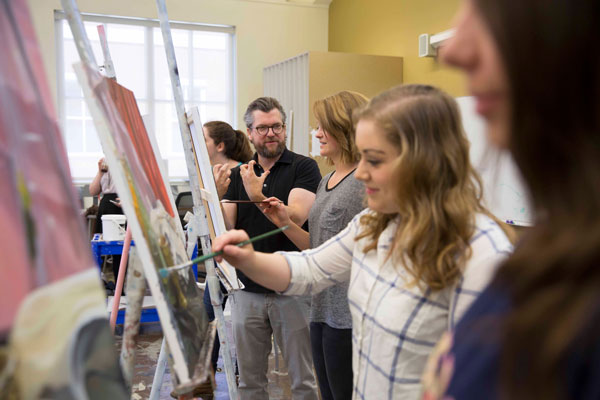Program Overview
Start your career in the field where art and interactivity merge. As gaming and interactive media become increasingly popular, experience with game art has never been more rewarding. Lipscomb’s Game Art program prepares students for careers creating and enhancing the visuals of games.
Unlike the technical game development or design degrees, a bachelor's in game art teaches students the foundational art concepts and prepares them to use these foundations in the creation of game ready assets. Study the art of movement through animation and drawing courses, while developing long-lasting connections with expert professionals in a Christian context. They will help you mature both as a game artist and an individual.
As a graduate of this program, you'll have a full game art portfolio and foundational knowledge for a career as a visual artist. These skills will help secure you a position for a variety of professions, such as a modeler, texture artist, animator or FX artist. Send in your portfolio and apply today.
Program Outcomes
The game art program will shape how you think about animation, game layout and player movement within a game. Beginning with drawing and animation courses, students study critical game graphics like how people and things move as well as how to build the environment with buildings or landscapes. As they progress in the program, students will gain the following skills and experience:
-
Ability to give and receive critique on artistic works
-
Software skills for creating art for game engines
- Working with game engines such as Unreal
- Learning how to balance their faith in relationship to career
Taught by highly-experienced faculty, this program’s curriculum is designed to give students a well-rounded artistic skill set and hands-on experience with game engines.
Why Earn Your Game Art Degree at Lipscomb University?
With state of the art technology and real life commercial projects, Lipscomb’s Game Art degree equips students with the skills they need to lead in the gaming and entertainment industry. Smaller class sizes mean you will have the chance to make strong connections with your peers and receive individual guidance from proven faculty. Program graduates leave with the skills and connections to be entrepreneurs in the gaming field.
Student to Faculty ratio
average class size
Our Faculty
Career Paths
Texture Artist
Texture artists make a visual world come to life. They are responsible for creating images and surfaces that match the style of the game. Highly detail-oriented, these artists can work in film and television in addition to gaming.
Level Designer
Focused on specific portions of a game, a level designer’s job is to craft actions, events, characters, objects and more. With a strong understanding of gameplay, they consider all possibilities for players and map out the flow of a game.
Virtual Production
Artists in virtual production create computer graphics and make decisions about FX and animation that heighten the immersive experience for audiences.








